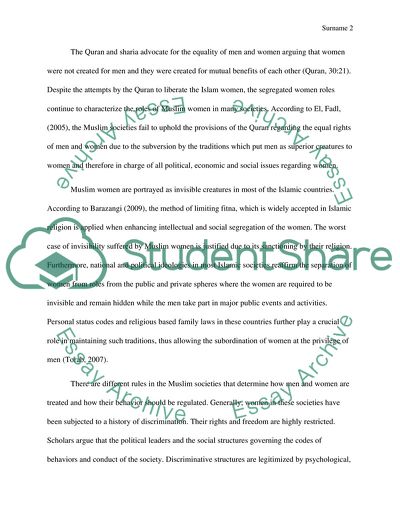Cite this document
(Religion of Islam: The Difference and the Treatment of Male and Female Case Study - 1, n.d.)
Religion of Islam: The Difference and the Treatment of Male and Female Case Study - 1. https://studentshare.org/gender-sexual-studies/1875101-the-difference-and-the-treatment-of-male-and-female-genders-and-the-rules-they-have-too-follow-in-the-religion-of-islam
Religion of Islam: The Difference and the Treatment of Male and Female Case Study - 1. https://studentshare.org/gender-sexual-studies/1875101-the-difference-and-the-treatment-of-male-and-female-genders-and-the-rules-they-have-too-follow-in-the-religion-of-islam
(Religion of Islam: The Difference and the Treatment of Male and Female Case Study - 1)
Religion of Islam: The Difference and the Treatment of Male and Female Case Study - 1. https://studentshare.org/gender-sexual-studies/1875101-the-difference-and-the-treatment-of-male-and-female-genders-and-the-rules-they-have-too-follow-in-the-religion-of-islam.
Religion of Islam: The Difference and the Treatment of Male and Female Case Study - 1. https://studentshare.org/gender-sexual-studies/1875101-the-difference-and-the-treatment-of-male-and-female-genders-and-the-rules-they-have-too-follow-in-the-religion-of-islam.
“Religion of Islam: The Difference and the Treatment of Male and Female Case Study - 1”. https://studentshare.org/gender-sexual-studies/1875101-the-difference-and-the-treatment-of-male-and-female-genders-and-the-rules-they-have-too-follow-in-the-religion-of-islam.


